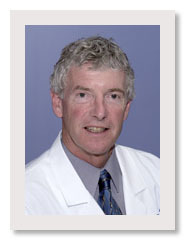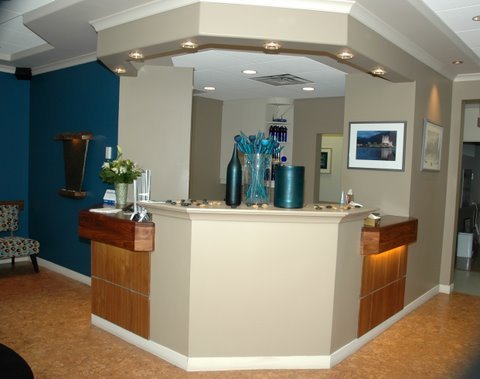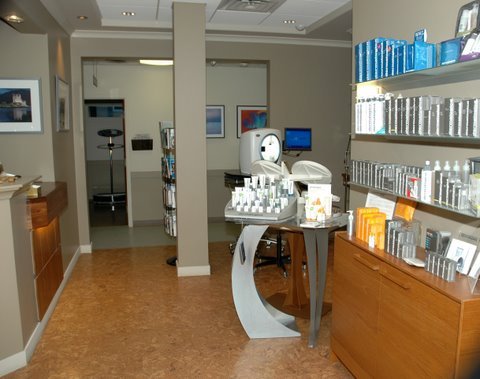Dr. Rick Balharry - Canmore MediSpa & Laser Centre in Alberta, Canada
/Technology has allowed this Canadian MD form Alberta to leave Obstetrics and the ER to focus on cosmetic medicine.
Name: Dr. Rick Balharry
Clinic: Canmore MediSpa & Laser Centre
Location: Canmore, Alberta, Canada
Website: canmoremedispa.com
Can you give us a picture on how you manage your medispa and laser center?
I have now backed out of Emergency Medicine and Obstetrics and focused on my office apart from my surgical days. This has allowed me to structure visits accurately so there is rarely anyone waiting. I do the invasive procedures and the injections and my technician does IPL, laser hair removal, dermal infusion, peels and skin care advice.
I also have a large vein practice and perform ultrasound examinations, US guided injections and regular sclerotherapy in the office and the surgery if needed at the Hospital. To add to this I have a large rehab practice as I do prolotherapy injections and PRP injections for the treatment of soft tissue injuries. These also are often ultrasound guided procedures. So, my days are quite eclectic.
Currently, there is not a lot of regulation (of cosmetic practices) although it does vary from Province to Province. It is possible for almost any physician to become an injector of neuromodulators or fillers as well as for many laser procedures. Our College requires lasers to be registered with them so that is controlled.
The Canadian Association of Aesthetic Medicine is a fairly new group that is trying to become recognized as an official body to standardize and certify physicians wishing to practice cosmetic medicine. They have laid out a curriculum of exams and mentorship requirements to obtain certification. It is hoped that this is what the Colleges will look to for guidance eventually.
I have no experience with the US system but I think it is similar to the Canadian. There are many good points in this system as far as the early integration of clinical medicine. This may, of course, have changed in the UK since I trained in the 60s. The fortunate thing about surgical training in the UK is the large population which allows a great deal of experience to be gained very quickly.
All physicians have a few staffing stories. What stories do you have about dealing with your laser clinic staff?
My Clinic is small with 7 employees. I am the only male. This can be interesting. Fortunately I do not have a high turnover of staff but we are in an expensive tourist area so there is always movement. I hire on personality rather than skill as many things can be taught and learned but good group reaction in this small environment is essential. I have tried a variety of incentive programmes in the past but find now that if I pay well and provide a happy work environment this works well and there are no fights and jealousies about what one is doing compared to the other.

As a fee for service practice, cosmetic practices and especially laser clinics and medical spas have to get the word out about their services. What have you found that works? What hasn’t? Where do you spend money on advertising? How successful are you marketing efforts?
I think that it is essential to have a good webpage that is kept current. We also have this converted for phone app as this is becoming the most commonly used access to information. My Manager keeps up to date on our Facebook page also. We do advertise in the local paper in an “Ask the Doc” format which seems to be popular. We do some e-mail advertising. I still find that good service that stimulates word-of-mouth advertising is still the most productive and rewarding.
You hold memberships in many different Societies such as the American Society of Laser Surgery and Medicine and the Canadian Association of Aesthetic Medicine. What differences do you see in how cosmetic medical societies function and the benefits that they provide to their members? Is there a stand out society that does better than the others?
They all have their strengths, some more academic than others. As I mentioned above, I think that the one which is going to have the most relevance is the Canadian Association of Aesthetic Medicine (CAAM) as this is both academic and practical. It is also attempting to set standards and certification for its members.
You're offering technology treatments by Lumenis, Sciton, Envy Medical Inc, Invasix, Biosound e-saote and Profect Medical Technologies. Are there issues that you've seen with these devices?
Unfortunately, they are not well regulated. Almost anyone who is not attached to a professional body can buy and use equipment. Physicians must register their laser equipment in Alberta and for invasive procedures like liposuction, must have a Registered Non-Hospital Surgical Facility that has a lot of controls attached to it. The physician must also be able to prove adequate training for invasive procedures such as liposuction. But, for some devices, there is not excessive control. It is my understanding that regulation varies considerably from state to state in the US but it also sounds as if there is generally more regulation of use in the States.
I do find it disappointing that many laser companies will sell equipment to non-physician regulated spas but, today, these places could very easily order from the Internet or from China.
Where do you think that advancements in cosmetic surgery will come from in the next ten years? Is there anything that's being developed now that you know of that you find exciting?
According to statistics, surgical procedures are losing ground to non-surgical procedures. In the western world I am sure that we will continue to see breast augmentation high on the list with possibly better and safer implants. Facial surgery is also changing with fat grafting and such to revolumise as well as to just tighten. There is an increasing interest in stem cell technology and I can see this gaining ground in many applications in the time to come. Generally, people are wanting quicker procedures than surgery permits which is why we are seeing such growth in non-surgical techniques.

What is the most difficult challenge you are facing as a 'business' right now and how are you addressing it?
The only challenge that I see just now is the cost of technology. It is very easy to become bankrupt on equipment due to the price and the rapid obsolescence of the technology. I think that we have to be very smart in our purchases, buying equipment that has a proven record, that is reasonably affordable to maintain with few disposables and also to focus on one’s areas of expertise and hone those skills. Then advertise yourself as expert in those areas specifically.
What actions have you taken as a physician that have most helped you in building a successful private practice? What have you learned from them?
The hardest thing for me to learn was to put a value on my work. As physicians we tend to be Calvinistic in the approach to our vocation and feel that we should be providing our treatment for the benefit of the patient and not for our personal gain. This, however, is not sustainable. This forced me in to realizing that my patient contacts had a value. By doing so and because I live in a rural community, I strived to be as good at my work as I possibly could through good training, knowledge and understanding of my procedures and being totally responsible for their outcomes. This alone has stimulated many referrals to my practice.
What's the best advice you've ever received as a physician and as an entrepreneur?
I recall, early in my practice of cosmetic medicine, being advised by one of my mentors, to expect ridicule and jealousy from many of my peers but not to weaken in my desire to proceed with this discipline. I found this to be true. I reminded myself of this advice often and have persevered to the point that now I have a huge referral practice from a large radius around my community. This has allowed me to pursue my passion and go to work every day with a smile on my face.
About: Dr. Balharry started his Canadian career in Saskatchewan and moved to Canmore in 1979, joining the Canmore Medical Clinic. He soon had a very busy general practice, including obstetrics, and then in 1995 he introduced the first medical laser into the Bow Valley and developed the Canmore Medical Laser Centre. This encouraged a passionate interest in cosmetic procedures which has continued to develop.
Since that time, he has been to courses and training sessions with some of the leading cosmetic physicians in North America. His clinic offers a wide variety of cosmetic medical and surgical procedures.
Dr. Balharry continues to explore new procedures and to introduce many of these procedures to his clinic in Canmore.. He is the Chief of Medical Staff at the Canmore General Hospital and still performs general and gynecological surgery at this Hospital.
He is an authority on Prolotherapy, which is an injection treatment for damaged ligaments (mostly back pain) and holds memberships in many different Societies including the American Society of Laser Surgery and Medicine and the Canadian Association of Aesthetic Medicine.
This interview is part of a series of interviews of physicians running medical spas, laser clinics and cosmetic surgery centers. If you'd like to be interviewed, just contact us.





